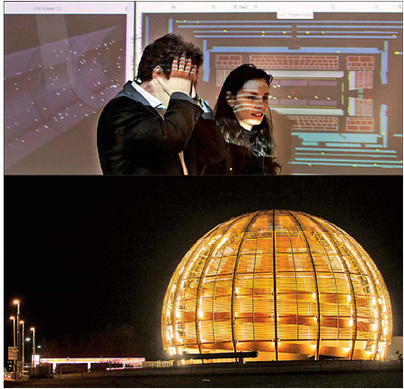Science and Health
Scientists bang sub-atoms
(China Daily/Agencies)
Updated: 2010-03-31 08:13
 |
Large Medium Small |
GENEVA - Physicists at the CERN research centre achieved high-power collisions of sub-atomic particles on Tuesday in their attempt to create mini-versions of the Big Bang that led to the birth of the universe 13.7 billion years ago.
The experiment at the European Centre for Nuclear Research (CERN), creating a record for the energy of particle conditions, will allow researchers to examine the nature of matter and the origin of stars and planets.
"This is a major breakthrough. We are going where nobody has been before. We have opened a new territory for physics," said Oliver Buchmueller, one of the key figures on the 10 billion Swiss franc ($9.4 billion) project.
The collisions took place at a record total collision energy of 7 billion billion electron volts (eV) and at a nano-fraction of a second slower than the speed of light in CERN's 27 km (16.8 mile) Large Hadron Collider (LHC), about a hundred meters (330 feet) below the Swiss-French border.
The experiment was delayed for a few hours by a couple of technical glitches with the power supply and an over-sensitive magnet safety system. This led the physicists to suspend the mega-power particle collisions, the focus of the world's largest scientific experiment.
During the coming months and years, CERN scientists expect the project to lift the veil on some of the mysteries of the cosmos - how matter was converted to mass after the fireball of the Big Bang and what is the dark, or invisible, matter that makes up an estimated 25 percent of the universe.







